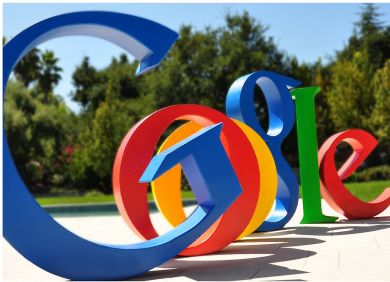

The hype around Google’s Project Glass continues to grow after company co-founder Sergey Brin was spotted in San Francisco sporting the stylish specs – a pair of “augmented reality” glasses that provide users with an in-your-face heads up display (HUD) offering information about the weather, messages from friends, or directions around town.
Google made a big splash earlier last week with a two-and-a-half minute video called “One day…” demonstrating the use of the technology as a user goes about his daily life in New York City.
Rackspace employee and technology pundit Robert Scoble photographed Brin at a dinner to raise money for the Foundation Fighting Blindness. He posted photos of Brin on his Google Plus account and wrote about the sighting on Twitter, where he noted Brin was wearing a backpack all night and also said Brin would not let him try the glasses on, referring to them as a prototype.
According to a research note written by Topeka Capital Markets analyst Brian White and obtained by the technology news site BGR, rival companies are already working on their own prototypes of HUD glasses.
“Our meetings today indicate that Google glasses (a.k.a., Project Glass) already has competitors working on similar initiatives to improve consumer’s mobility around Internet access,” White wrote. “We expect to be hear more about projects such as this and others in the coming years. This could drive a new wave of innovation across the mobility space.”
Companies like Vuzix, in partnership with Nokia, have already showcased its SMART Glasses Technology – integrated HD display engines and waveguide optics – as well as Augmented Reality and Mobile Video Eyewear offerings at this year’s Consumer Electronics Show, for which it won two innovation awards.
The company’s STAR 1200 Augmented Reality System, which currently retails for $4,999 (£3,150), uses quantum optic see-through technology that enables users to see the real world directly through and around its transparent widescreen video displays. Computer content, such as text, images and video are overlaid on the displays in full coluor 2D or 3D.
Do you know Google’s secrets? To find out, take our quiz.
As UK and Europe develop closer military ties, European Commission says it will invest €1.3…
Zuckerberg seeks to revive Facebook's original spirit, as Meta launches Facebook Friends tab, so users…
Notable development for Meta, after appeal against 2021 WhatsApp privacy fine is backed by advisor…
First sign of shakeup under new CEO Lip-Bu Tan? Three Intel board members confirm they…
Trump's nominee for SEC Chairman, Paul Atkins, has pledged a “rational, coherent, and principled approach”…
After being 'retired' by Intel's board of directors, ex-CEO Pat Gelsinger has joined a VC…